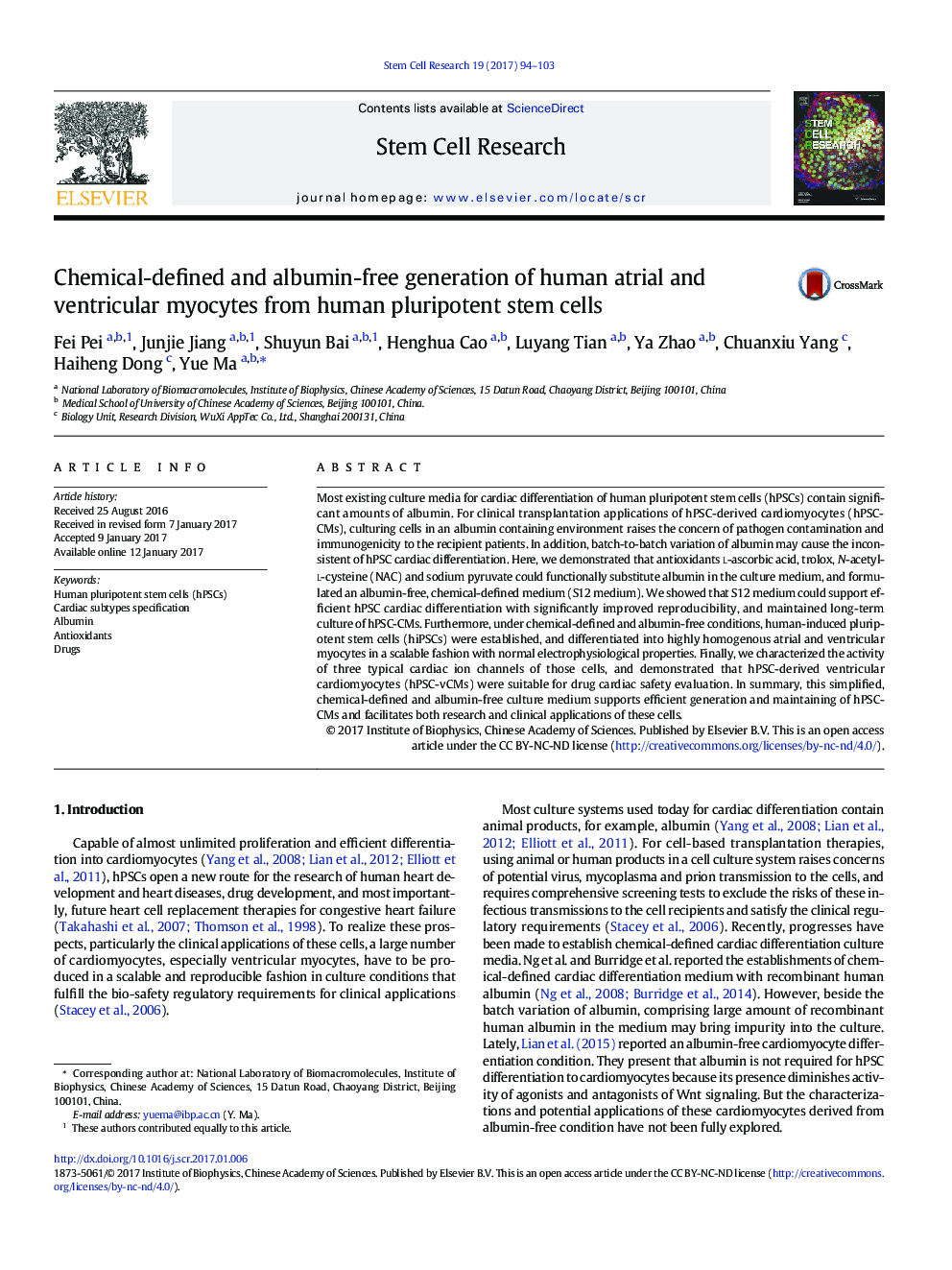| Article ID | Journal | Published Year | Pages | File Type |
|---|---|---|---|---|
| 5522731 | Stem Cell Research | 2017 | 10 Pages |
â¢A chemical-defined and albumin-free medium established supports hPSC cardiac differentiation with improved reproducibility.â¢hiPSC lines are derived and differentiated into highly homogeneous atrial- and ventricular-like myocytes.â¢hPSC-derived ventricular cardiomyocytes (hPSC-vCMs) are suitable for drug cardiac safety evaluation.
Most existing culture media for cardiac differentiation of human pluripotent stem cells (hPSCs) contain significant amounts of albumin. For clinical transplantation applications of hPSC-derived cardiomyocytes (hPSC-CMs), culturing cells in an albumin containing environment raises the concern of pathogen contamination and immunogenicity to the recipient patients. In addition, batch-to-batch variation of albumin may cause the inconsistent of hPSC cardiac differentiation. Here, we demonstrated that antioxidants l-ascorbic acid, trolox, N-acetyl-l-cysteine (NAC) and sodium pyruvate could functionally substitute albumin in the culture medium, and formulated an albumin-free, chemical-defined medium (S12 medium). We showed that S12 medium could support efficient hPSC cardiac differentiation with significantly improved reproducibility, and maintained long-term culture of hPSC-CMs. Furthermore, under chemical-defined and albumin-free conditions, human-induced pluripotent stem cells (hiPSCs) were established, and differentiated into highly homogenous atrial and ventricular myocytes in a scalable fashion with normal electrophysiological properties. Finally, we characterized the activity of three typical cardiac ion channels of those cells, and demonstrated that hPSC-derived ventricular cardiomyocytes (hPSC-vCMs) were suitable for drug cardiac safety evaluation. In summary, this simplified, chemical-defined and albumin-free culture medium supports efficient generation and maintaining of hPSC-CMs and facilitates both research and clinical applications of these cells.
